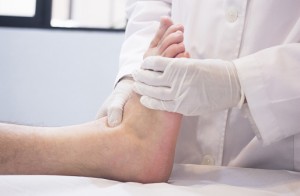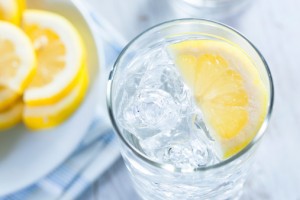Skinny Fat – Being Thin Does Not Always Mean You’re Lean
Have you ever seen someone who looks thin and lean in jeans and a sweater but looks saggy in shorts and a tank top? That is skinny fat, which is thin but not lean. Too much fat and not enough protein in your diet can contribute to being thin but not necessarily lean. When we eat fat our bodies like to store it as fat. When we eat protein it provides us with what the body needs to rebuild and to preserve our muscle mass therefore helping to keep us lean. Less fat, more protein equals a lean physique.
How can you tell is your diet is keeping you from being lean? Open your refrigerator and look at your dairy products and condiments. Are you drinking 2% or whole milk? Are you eating blocks of cheddar cheese? Are your salad dressings and your mayonnaise the full fat versions? Even if you drink a little milk and eat cheese and salad dressing sparingly, you may be eating much more fat than you think. One cup of whole milk has 8 grams. 2 tablespoons of salad dressing has 9 or more grams of fat. A slice of cheddar cheese has 9 grams of fat.
Let’s say you have a cup of milk on your cereal at breakfast, a small salad with dressing and a ham and cheese sandwich at lunch. You would have had 26 grams of fat from the milk, dressing, and cheese alone. As you can see, full fat dairy products and condiments can contribute a lot of fat to the average diet.
Fat intake should be 20% of your total calories or less. If you consume 1800 calories a day, 360 or less should come from fat. That is equal to 40 grams of fat a day. To stay within your fat budget, changing to low-fat or fat-free dairy products and condiments is a good first step. Generally switching to low-fat foods and getting your taste buds accustomed to it is the easiest way to make the change. I should also point out that low-fat foods are not created equal. If you try low-fat Ranch dressing and don’t like it, try another brand. You have a good chance of finding one that you like. After you have become accustomed to low-fat products begin trying fat-free items. Once again, just because one brand of a fat-free food is not to your liking that does not mean that you will dislike another brand.
Another way to decrease the fat in your diet is to eat protein to maintain muscle mass. Eat lean protein. Good protein choices include fat-free or low-fat cheese, egg whites or egg substitute, white fish, seafood, chicken, veggie burgers, ham, Canadian bacon and lean beef. Beef seems to be the trickiest protein to buy. Consumers see 75% lean and think that the beef is a good choice. Look for beef that is labeled round or tenderloin or says 93% lean. Avoid beef that is ground, corned beef, ribs or Prime rib. If you are a steak eater, try filet mignon or flank steak. High fat pork choices include cutlets, top loin, chops, Boston butt, bratwurst, and bacon. Veal and lamb are also high in fat.
Don’t forget to look at your snacks. Read labels for the fat content. Take a look at the labels on your snack food choices. 3 grams of fat or less is considered low-fat. Graham crackers, nilla wafers, animal crackers are low-fat cookie choices. For a crispy, salty snack try baked potato chips or tortilla chips. However, watch out for the overall amount of sugar and maintain correct portion sizes also!
Take an overall look at your diet and try new foods. Try various brands of foods. Find foods that you can be satisfied eating that will help you decrease the overall fat in your diet. Make healthy protein choices that will keep your muscle mass intact. You may find that being lean is easier than it looks.
-
Q&A: Does Skinny Fiber Really Work?
Q: What is Skinny Fiber? – Evelyn K. LIKE BlackDoc
-
Information You Should Know About Fitness Trainers
We all were born small and weak but nobody said we have to stay that w
-
Sugars Mind Games
These days, carbohydrates are considered evil and responsible for the
-
10-Minute Fresh Berry Dessert with Yogurt and Chocolate
This 10-minute dessert combines our favorite flavors in a quick an
-
10 Tips: Eating Out and Staying Healthy
With the array of restaurants available to us these days, dining ou
-
Could You Have Diabetes? Ask Your Dentist
Doctors are beginning to pay more attention to the strong conne
- DON'T MISS
- Weight Loss Tricks - What Fitness Program To Follow
- Why Lasting Weight Loss Has (Almost) Nothing To Do With Diet Or Exercise
- The 5 Secrets That Every Weight Loss Expert Lives By
- Breakfast Recipes For Weight Loss
- Is Your Cellulite And Fat Here To Stay
- Weight Loss Speed Up Your Metabolism
- Selecting the Right Diet Pills for Weight Loss
- 10 Tips For Losing Weight Fast
- How to Easily Get Rid of Belly Fat
- Global Warming Skeptics: Why Do They Exist?




